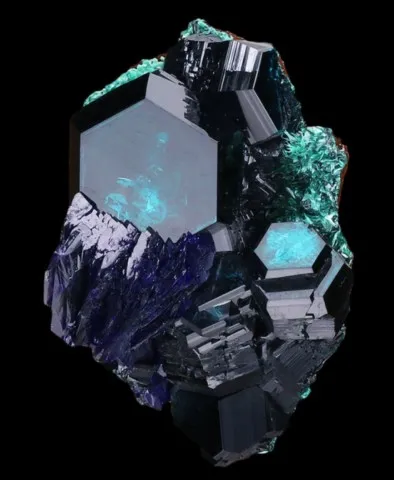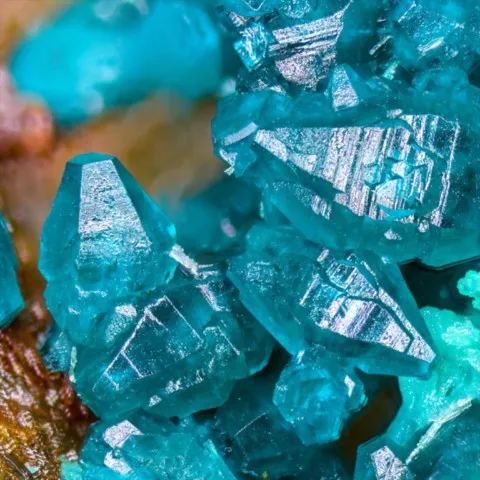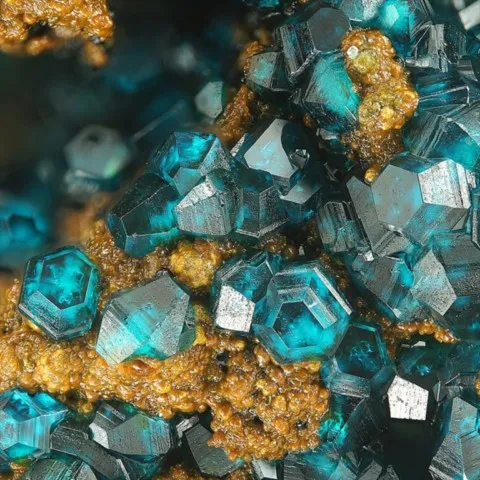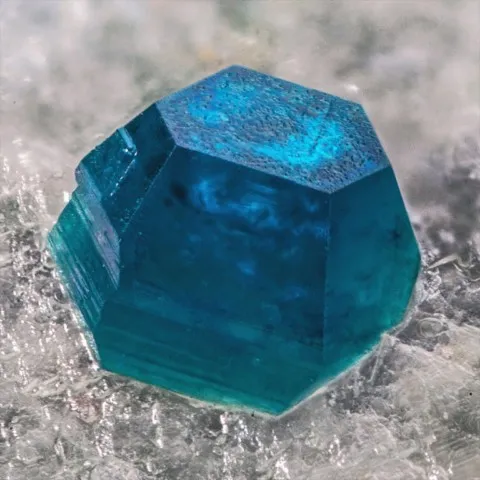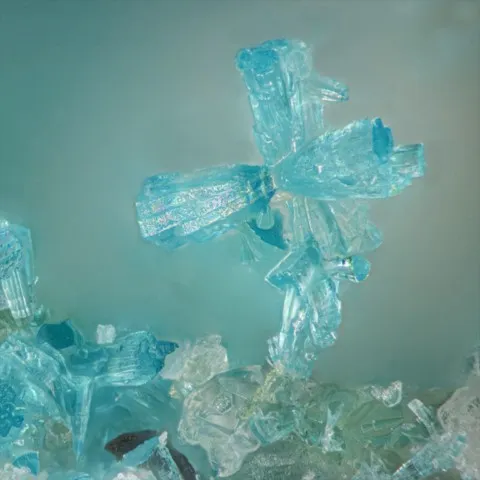SPANGOLITE
Class : Sulfates, chromates, molybdates
Subclass : Hydrated sulfates
Crystal system : Trigonal
Chemistry : Cu6AlSO4(OH)12Cl 3H2O
Rarity : Fairly common
Spangolite is a secondary copper and aluminum sulfate present in the oxidation zone of copper deposits, often associated with malachite, azurite and brochantite. It is also found in some industrial slags. It was named in honor of Norman Spang who provided the definition samples. Spangolite is tabular crystals, sometimes stocky prismatic, frequently hemimorphic, of bluish-green, emerald green or blue color.
Main photo : Spangolite, azurite and malachite from Aranzazú Mine, Zacatecas, Mexico © Peter Megaw
Spangolite in the World
Twinning
Twinning is known but rare on {0001}.
Fakes and treatments
No fakes listed for this mineral species.
Hardness : 3
Density : 3.13 to 3.14
Fracture : Conchoidal
Streak : Pale green
TP : Translucent to transparent
RI : 1.627 to 1.687
Birefringence : 0.053
Optical character : Uniaxial -
Pleochroism : Low
Fluorescence : None
Solubility : Acids
Magnetism : NoneRadioactivity : None

